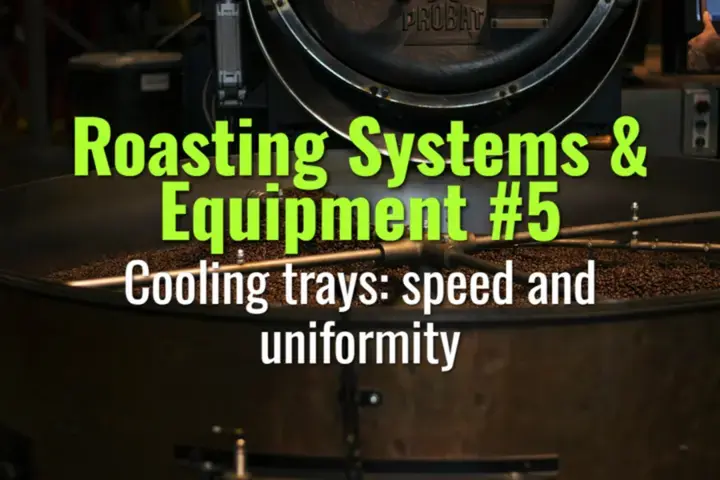Cooling trays: speed and uniformity
Understand how cooling trays rapidly stop the roast, preserve flavor, and ensure uniform cooling of coffee beans.
- Coffee Basics Nerds
- 1 min read

Key Concepts
-
Purpose of Cooling:
-
Stops the Maillard reaction and caramelization to lock in desired roast levels.
-
Prevents overdevelopment or off-flavors.
-
Tray Types and Designs:
-
Rotary cooling trays: Rotate beans to promote even cooling.
-
Static trays with airflow: Use high-velocity air to cool beans uniformly.
-
Hybrid systems: Combine agitation and forced air for efficiency.
-
Cooling Speed:
-
Rapid cooling (≈5–10 minutes) reduces post-roast development.
-
Monitor bean temperature; target ≈30°C before storage or packaging.
-
Uniformity Factors:
-
Agitation speed and pattern.
-
Airflow distribution and fan speed.
-
Batch size vs tray capacity.
-
Operational Tips:
-
Avoid overcrowding trays to prevent uneven cooling.
-
Regularly clean trays to prevent residue buildup that affects airflow.
-
Check fans and air ducts for consistent airflow across the tray.
Summary
Efficient cooling trays are vital for controlling roast endpoints, ensuring flavor consistency, and preparing beans for storage or packaging without compromising quality.